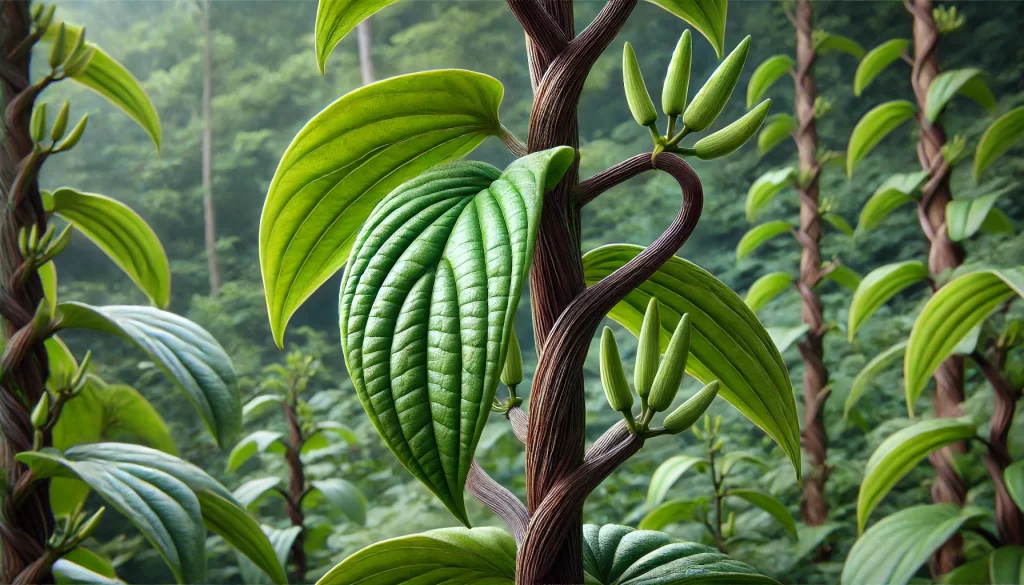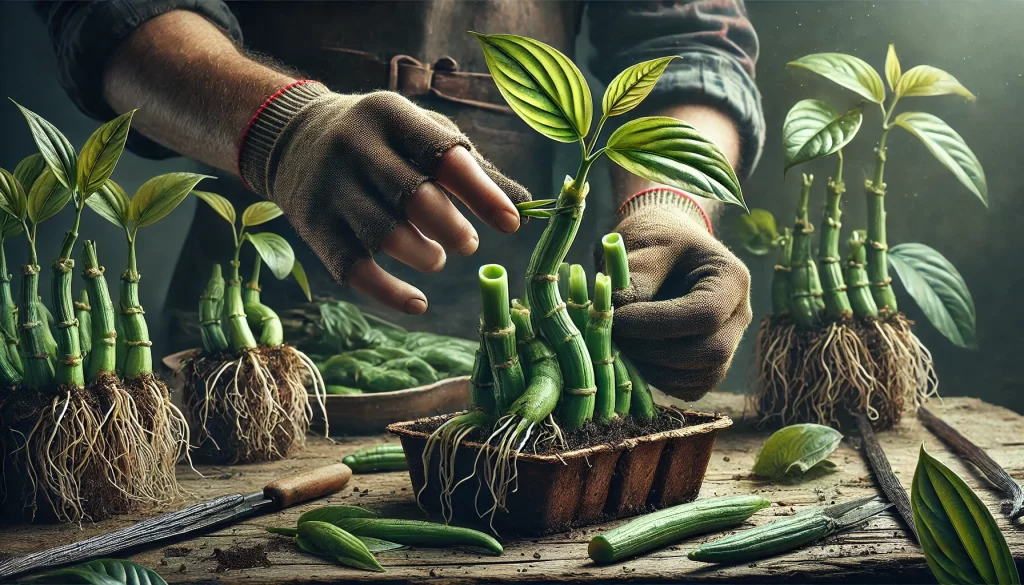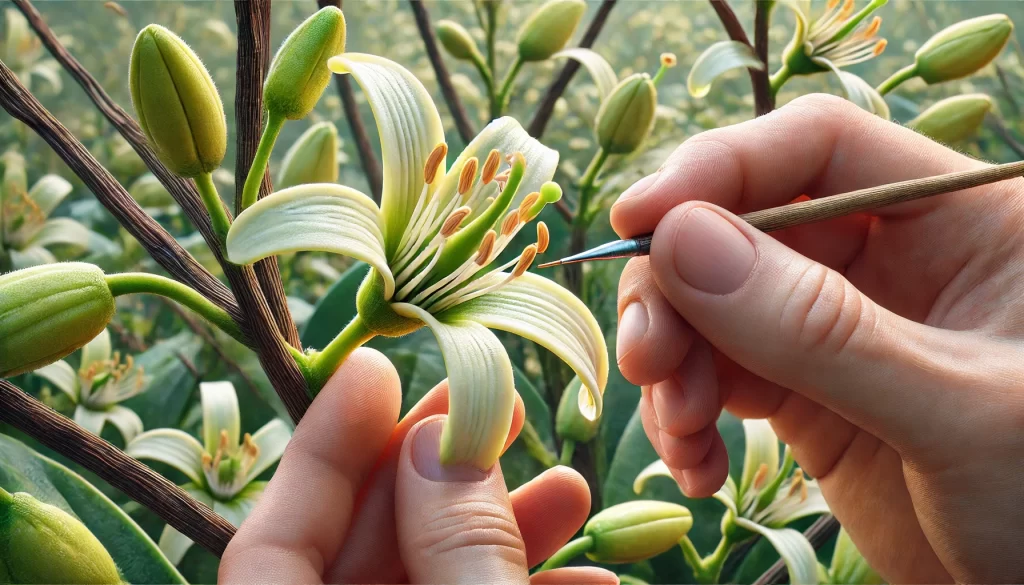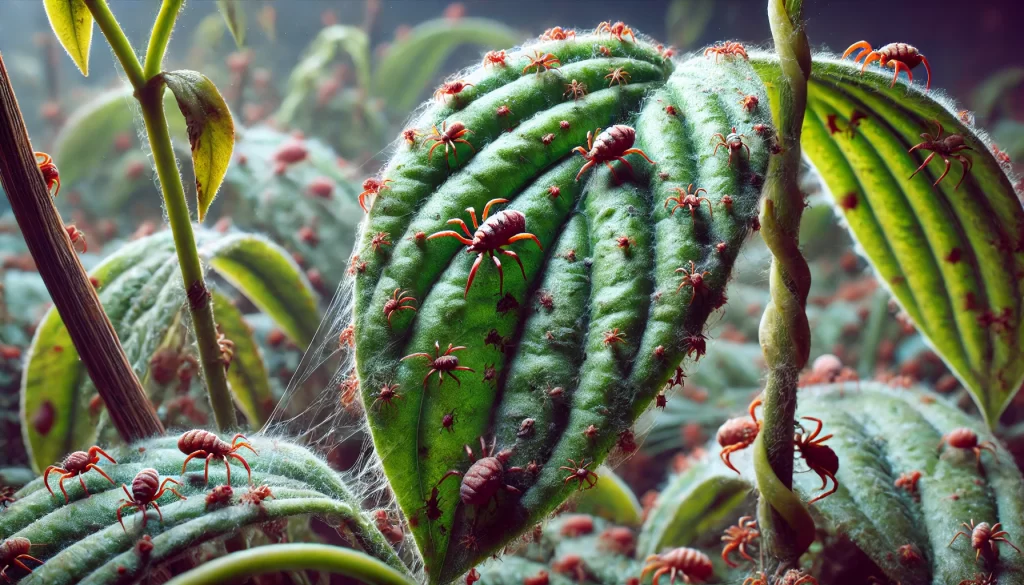Introduction to Vanilla Cultivation
Vanilla (Vanilla planifolia) is a tropical plant with high commercial value due to its use in the food, cosmetic, and pharmaceutical industries. Native to Mexico, vanilla is known as one of the most labor-intensive and profitable crops in the world. This article details the best practices for managing vanilla cultivation, from site selection to harvest and processing, with the aim of maximizing production and the quality of the final product.

Vanilla Site Selection
Climate Conditions
Vanilla thrives in warm and humid climates, with temperatures ranging between 20°C and 30°C. It requires high relative humidity, ideally between 70% and 80%, and annual precipitation of 1,500 to 3,000 mm. Areas with partial shade, such as tropical forests, are ideal for its cultivation.
Soil Selection
The soil for vanilla cultivation should be fertile, well-drained, and rich in organic matter. Sandy loam or loamy soils with a pH of 6 to 7 are most suitable. It is crucial to avoid compacted or poorly drained soils, as they can cause root rot.
Site Preparation
- Clearing and Land Preparation: Remove weeds and unwanted vegetation, leaving shade trees to protect young plants.
- Incorporation of Organic Matter: Add compost or well-decomposed manure to improve soil fertility.
- Drainage: Implement an efficient drainage system to prevent waterlogging during the rainy season.

Vanilla Planting and Propagation
Propagation Methods
Vanilla is primarily propagated through cuttings. Cuttings of 60 to 120 cm in length, taken from healthy, mature plants, are ideal to ensure good development of new plants.
Cutting Preparation
- Cutting Selection: Choose healthy cuttings with no signs of diseases or pests.
- Cutting Treatment: Dip the base of the cutting in a fungicide solution to prevent infections before planting.

Cutting Planting
Transplanting of cuttings should be done at the beginning of the rainy season to ensure good establishment. A spacing of 1.5 to 2 meters between plants and 2.5 to 3 meters between rows is recommended. Cuttings should be planted at an angle, with at least two nodes buried in the soil, and supported by stakes or shade trees.

Vanilla Crop Management
Staking and Shading
Vanilla is a climbing plant that requires support for vertical growth. Living stakes, such as shade trees, or artificial support structures are used. It is important to maintain a balance between light and shade, as excessive sunlight can damage leaves and flowers, while a lack of light can delay growth.
Fertilization
Adequate fertilization is essential for vigorous vanilla growth. It is recommended to apply organic fertilizers such as compost or manure every six months. Chemical fertilizers should be used sparingly, preferably in balanced NPK (nitrogen, phosphorus, potassium) formulas.
- Nitrogen (N): Promotes vegetative growth.
- Phosphorus (P): Supports root and flower formation.
- Potassium (K): Enhances disease resistance and pod quality.

Irrigation
Irrigation should be regular but controlled to prevent waterlogging. During the dry season, it is essential to keep the soil moist but not saturated. Adequate irrigation is crucial during flowering and pod development.
Manual Pollination of Vanilla
Importance of Pollination
Vanilla requires manual pollination due to the lack of natural pollinators outside its original habitat. Manual pollination is a delicate and essential task to ensure pod production.

Manual Pollination Technique
Pollination should be done in the early morning when the flowers are open and fresh. The procedure involves:
- Identifying Receptive Flowers: Select flowers that have fully opened.
- Pollination: Use a stick or similar tool to transfer pollen from the stamen to the stigma, ensuring the flower is properly fertilized.
Successful pollination is indicated when the flower does not fall off after a few days and begins to form a pod.
Vanilla Pest and Disease Management
Common Pests
- Mealybugs: Affect leaves and roots, weakening plants.
- Mites: Cause leaf deformation and discoloration.
Control Strategies
- Biological Control: Introduce natural predators like ladybugs to control mealybugs.
- Monitoring and Integrated Management: Regularly inspect plants for early pest detection and apply biological or chemical control measures as needed.

Common Diseases
- Root Rot (Fusarium spp.): Causes wilting and plant death.
- Antracnose (Colletotrichum spp.): Affects leaves and pods, causing spots and necrosis.
Control Strategies
- Improve Drainage: Prevent waterlogging to reduce the risk of root rot.
- Use of Fungicides: Apply preventive fungicides in conditions favorable for disease development.

Vanilla Harvesting and Processing
Maturity Indicators
Vanilla pod harvesting should be done when the pods have reached full maturity, which is identified by:
- Color Change: Pods change from green to a light yellow color at the base.
- Characteristic Aroma: Mature pods emit a soft but distinctive aroma.
Harvesting Techniques
Harvesting is done manually, carefully cutting the pods to avoid damage. It is crucial to harvest at the right time to ensure the quality of the final product.
Pod Processing
Vanilla processing is a long and delicate process that includes:
- Scalding: Immerse the pods in hot water to stop maturation.
- Fermentation: Wrap the pods in blankets for several days to develop their characteristic aroma and color.
- Drying: Dry the pods in the sun for weeks until they reach the proper moisture content.
- Maturation: Store the pods in airtight boxes for several months to develop their full flavor.
 AgronoBlog – Agriculture Blog
AgronoBlog – Agriculture Blog